THIS YEAR NVIDIA HOSTED the GPU Technology Conference at the San Jose Convention Center. NVIDIA is a company that everyone is familiar with, but there is much more to NVIDIA than graphics cards.
Thinking Outside The Box—AI, Mixed_Realities, and VDI in Architecture
NVIDIA is an innovator that thinks outside the box, and definitely outside the CPU. The conference is the premier conference on AI and Deep Learning demonstrating the power of the GPU for self-driving cars, healthcare, architecture and engineering, virtual reality, smart cities, and big data.
In the AEC track, VR/AR/MR was topic of importance as companies are beginning to find real-world uses for the technology in architecture, engineering, manufacturing, and design. They can show their clients in real-time a 3D virtual world of what their project looks like and make changes on the fly. You can handwrite your changes in real-time or type them in.
GPU rendering is very much a hot topic with NVIDIA showcasing their GPU technology with companies like OTOY, Chaos Group, and Unreal Engine.

01 – “Nvidia VP of Developer Program Greg Estes shows GTC numbers for 2018. (image: Akiko Ashley / Architosh. All rights reserved.)
Large Architectural firms discussed VDI and the technologies they were using to implement it using NVIDIA’s GPU. VDI allows large firms to access their current projects from both the office and at home. The flexibility to sign on at any location gives the firm’s employees the ability to do changes in real-time from anywhere. The ability to sign on to their laptop and show the client the current status of a design job and to have architects in other offices be able to collaborate made for an efficient work practice.
Research and Project Clara
Entertainment projects are finding their way to VR/AR/MR in game development, animation, and VFX. Autonomous cars powered by NVIDIA technology demonstrated the extensive research and development NVIDIA is doing to create safe, reliable, and complex systems that you can trust. NVIDIA’s conference provided training, insights, and direct access to experts from NVIDIA and other leading experts from other companies. Creative artists including architects, engineers, product designers discovered using VR helps them with their productivity and their relationships with their clients especially with multiple people having access at one time.
Several firms use NVIDIA’s Holodeck VR to collaborate simultaneously on projects using a virtual 3D environment. The Holodeck VR technology runs on NVIDIA GPU’s, and with the new announcement of the new GPU server, this technology can be used to design large-scale projects without the wait. The NVIDIA supercomputing platform “Project Clara” takes advantage of the advancements in computer technology to provide better imaging used for early detection of serious medical conditions. Clara is virtual, scalable and can be used to compute for any instrument including CT, MRI, or Ultrasound.
Buy More, Save More
The keynote on Tuesday with Jensen Huang, the founder, and CEO of NVIDIA was completely sold out, and the overflow rooms were filled. “Buy More, Save More” was thematic of the message, applicable from saving time and money, to saving lives on the road or in the hospital.
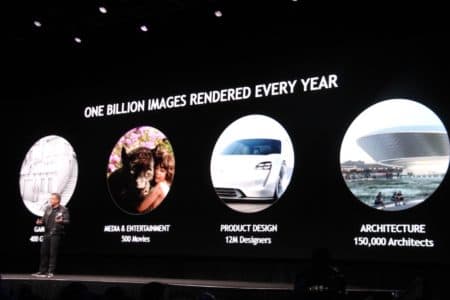
02 – Founder and CEO of NVIDIA, Jensen Huang, was the keynote speaker, here talking about billions of images rendered every year. (image: Akiko Ashley / Architosh. All rights reserved.)
Jensen started with the announcement of the GV100 with NVIDIA RTX Technology. This is a giant leap in real-time computer graphics delivering real-time ray tracing. The same Volta GPU as the Titan V powers the NVIDIA Quadro GV100. It has 5120 CUDA cores with 640 Tensor cores. This is a lot of power for pros struggling to get their rendering times under control.
While the Titan V has 16 GB of memory, the GV100 has 32GB, making it the most powerful desktop video card made by NVIDIA to date. The GV100 offers 870 GB of bandwidth. When you consider the performance of the GV100 card as an investment to deliver faster rendering times and simulations the hefty price tag of $8,999 can be justified in workforce hours saved. Here are some specs. (see image 04)
| FP64 Performance | 7.4 teraflops |
| FP32 Performance | 14.8 teraflops |
| FB16 Performance | 29.6 teraflops |
| Tensor Performance | 118.5 teraflops |
What does this mean as an architect, engineer, or for construction? NVIDIA wants to close the gap between rasterization and ray tracing. A noise-to-noise Denoiser that can give you a finished image in 1 or 2 passes that once took 8 to 16 passes. All of this possible through their AI technology.

04 – NVIDIA’s Jensen Huang announcing Quadro GV 100. (image: Akiko Ashley / Architosh. All rights reserved.)
Jensen also announced the NVIDIA DGX – 2, the largest GPU ever created. The NVIDIA DGX – 2 has 16 Volta GPU’s and 30 terabytes of NVM storage for $399,000. The DGX – 2 uses an interconnect system fabric called NVIDIA NVSwitch that gives the GPU’s the power to communicated simultaneously at a mind-boggling speed of 2.4 terabytes a second. (see image 05 below) This system was designed for AI and Deep Learning but can be applied to computer graphics as seen in a demonstration with NVIDIA, Unreal Engine, and ILMxLabs Star Wars using the Unreal Game Engine with real-time ray tracing. (see image 03)
This server can replace traditional CPU servers saving space and money. It uses less power, smaller footprint, and reduces costs. If you have multiple offices in different cities, this solution gives power to a VDI set up so you can use NVIDIA’s Holodeck VR to collaborate with others on projects in real time.
NVIDIA had other key announcements including the NVIDIA GPU Cloud for AI and Deep Learning being used by 20,000 organizations. Kubernetes is now running on NVIDIA GPU. Kubernetes eliminates many of the manual processes in deploying and scaling containerized applications. It allows tasks to be allocated to multiple servers and supported by multiple cloud servers. NVIDIA announced NVIDIA Isaac Robotics Platform used in their open drive platform for autonomous vehicles.
“Everything that moves will be autonomous,” states NVIDIA CEO Jensen Huang. NVIDIA end-to-end platform collects data, trains models, does simulations, and then it is capable of driving. Drive Constellation is a virtual reality system to test self-driving cars. NVIDIA has its AI and Deep Learning incubator known as “Inception”. This program is dedicated to nurturing startups that are innovating AI and data science. Inception is a virtual accelerator that helps the startup in key points of their development and prototyping. CUDA seems to be the standard of choice over OpenCL. NVIDIA supports CUDA developers. OpenCL is open source, so support for it is limited. Executives from many of the top rendering software applications are taking advantage of CUDA support.

06 – NVIDIA GTC Exhibit Floor action. During Happy Hour food was served. (image: Akiko Ashley / Architosh. All rights reserved.)
The GTC was filled with sessions, hands-on training with an expert (subject to schedule availability), self-training labs, networking with professionals, a large exhibits floor, and dinner with strangers (dinner hosted by local restaurants where you can have great conversations about specific topics.) The VR Village shared innovative technology in the VR space. (see images 06 -07)
Speakers from Kohn Petersen Fox, Gensler, HKS, Cannon Design, and Boeing spoke about how they used NVIDIA technology to create and do their design work with multiple technologies. The AEC track included such sessions as “Exploring Holodeck Use Cases for Architecture, Engineering, and Construction”, “How Multi-User Collaborative VR is Changing the Way Architects Design Spaces”, “An Architectural Design Firm’s Journey Through Virtual GPU Technology for Global Collaboration”, “Autodesk BIM Cloud Workspace on Azure and Citrix”, “The Future of Real-Time: Experience Design”, and “Cinematic Lighting in the Unreal Engine”. (Unreal is a huge visualization tool in Europe.)
The Hope For the New Mac Pro
With such amazing advancements taking place at NVIDIA and with Windows and Linux workstation pros having broad access to these technologies, where does this leave the Mac-based pro user?
The hope for Mac pros is that Apple considers a way for them to have access to NVIDIA technology. The technology NVIDIA has and is developing is extraordinary and is being used to power the global leaders in design, engineering, build and manufacturing. When you think about Apple as an innovation powerhouse and you think about how it has taken that to both their own manufacturing and the company’s architecture across campus and stores, it begs the question, where is Mac’s role in all this?
Advertisement
Though the DGX- 2 can be accessed like any server environment, the last Quadro card for Mac was on the Mac G5. As Apple designs for professionals with their new upcoming Mac Pro line, we hope to see an NVIDIA Quadro Card and development with CUDA as an option. Why should Mac pros be limited in what tools they use? This is the driving question at the moment that will define the answer if Apple will be successful with the new Mac Pro or repeat the mistake of 2013.
MORE: Apple Leaving Intel on Macs by 2020—Impact on New Mac Pro
On a side note, I did make a side trip to Apple’s new corporate headquarters but was arrived too early for the tour but I did snap some photos of the new campus and Apple Park Visitor Center. You can check them out in a gallery on Architosh.
GTC and Architosh
I do plan on being at GTC next year to see what is next, and to find out how the tech that came out this year was applied in the real world and the fascinating results. I hope you have enjoyed this report. —- AKIKO ASHLEY, ASSOCIATE EDITOR.

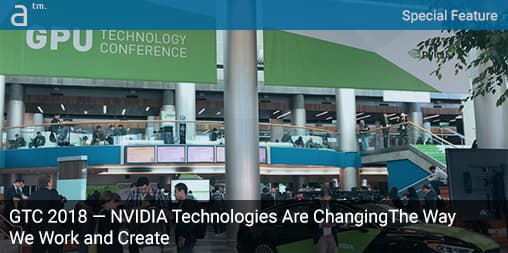
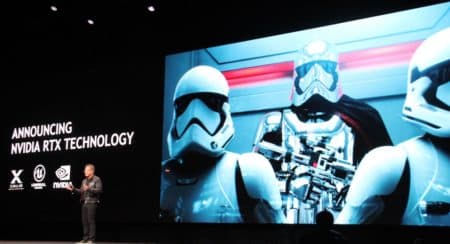
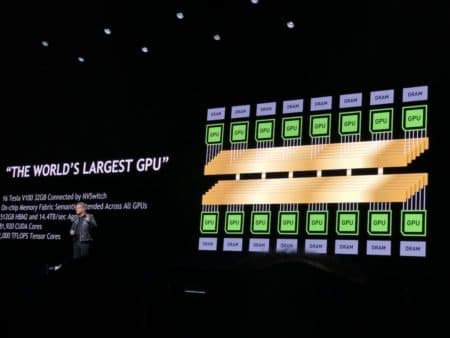
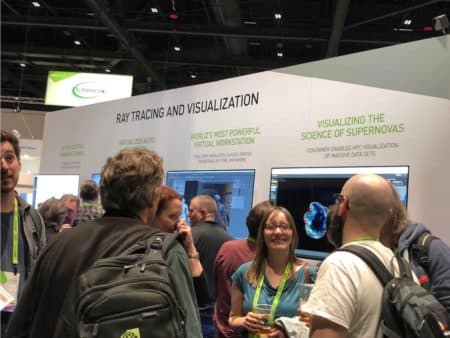


Reader Comments
Comments for this story are closed